10 Toyota Supras and Celicas Worth Restoring Today
Toyota’s Supra and Celica have always been iconic, and today, they offer an exciting opportunity for those interested in car restoration. Both models are known for their unique designs and the driving experience they offer. With the right care, these cars can be transformed into stunning examples of automotive history. Whether you’re a fan of the Supra’s power or the Celica’s compact agility, both cars provide plenty of potential for restoration projects.
This post may contain affiliate links, which helps keep this content free. Please read our disclosure for more info.
1979-1981 Toyota Celica Supra MKI

This early Supra model (launched 1979 in the U.S.) still shares many elements with the Celica Liftback, and its inline-six engine and rear-wheel drive layout give it collector appeal. The reason it is worth restoring today is because it represents the root of the Supra lineage, which today commands attention, and because well-kept originals are increasingly rare. Its best feature is the 2.8-litre 5M-E six-cylinder combined with the sporty liftback body, making for a sleeper classic. Current market values for a solid example of this generation rest at about US $20,000-$35,000, depending on condition, mileage, originality, and region. For restoration prospects, check for rust especially in the rear wheel arches and ensure original trim and engine numbers are present.
When you begin work on one of these, pay close attention to the availability of parts such as the distributor-less ignition or the proper 5-speed manual transmission. Because these models were produced in relatively higher numbers than later Supras, they offer slightly more forgiving restoration stakes, but originality will drive value. Restoration of corrosion-prone areas, repainting in correct factory colour, and using period-correct alloy wheels will all help the car resume its classic status. Verify vehicle history and look for examples that retained their factory specification rather than modified heavily. If you find a clean one, this MKI could be a rewarding project.
1986-1992 Toyota Supra A70
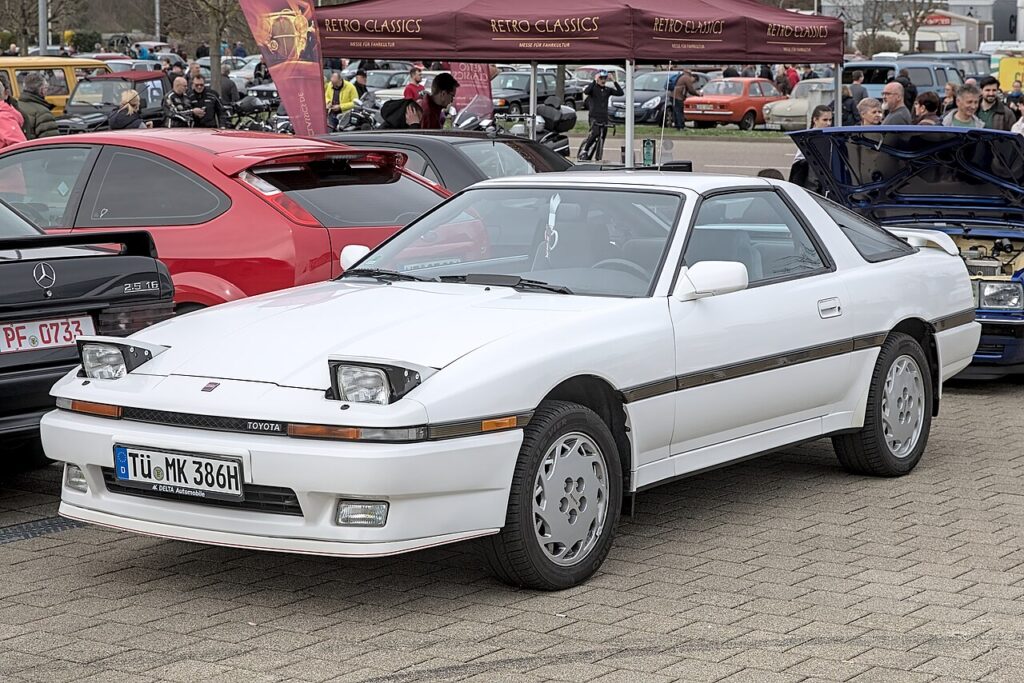
Introduced in 1986, the A70 Supra marked the moment when Supra became its own model rather than a Celica derivative, and for that reason it’s increasingly sought as a restoration project. The appeal for restoration comes from its rear-wheel-drive platform, availability of the 3.0-litre 7M-GTE turbo engine (in certain markets), and its 80s sports car styling now seen as iconic. Its best feature is the combination of a targa-top option, analog gauges, and manual gearbox in many versions-giving it true driver appeal. Approximate market value for a good condition non-turbo version lies in the US $25,000-40,000 range, while a turbo, low-mileage example may fetch above US $50,000. When restoring, confirm correct front suspension arms, check for oil leaks from the 7M-GTE engine, and preserve the factory wiring loom which often gets altered.
As a project it offers a balance of vintage performance and parts availability, though rust and aging interiors are common issues. Key restoration steps include rebuilding the ABS system (if equipped), checking and refreshing all rubber engine mounts and bushings, and staying with original wheel and body-kit setup to retain collector value. If you restore with colour and badging that match original factory specification, you’ll have a car with both strong visual interest and mechanical pedigree. Keep detailed documentation of all restoration steps for best return. This generation remains a sweet spot for Toyota fans who appreciate 1980s performance combined with collect-ability.
1994-1999 Toyota Celica GT-Four (ST205)

Launched in 1994, the Celica GT-Four (ST205) is the high-performance rally-derived version of the Celica, equipped with a turbocharged 2.0-litre 3S-GTE engine and full-time all-wheel drive. It’s worth restoring today thanks to its World Rally Championship heritage, limited build numbers (especially in certain markets), and the growing interest in 90s Japanese sports cars. Its standout feature is the AWD plus turbo combo in a compact coupe body-rare for its era, offering strong driving character. Current good condition examples are valued around US $30,000-45,000, and especially rare editions (like the limited GT-Four RC) may rise higher. If you take on a restoration, inspect the turbo system for wear, check the AWD transfer case for service history, and ensure the body is free of previous collision repairs.
Because this is a performance model, restoration should focus on maintaining factory suspension geometry, ensuring the engine is rebuilt or serviced properly (as turbo cars tend to have higher maintenance needs), and retaining the original centre-console and interior trim which collectors value. Use period correct wheels and tires, and avoid heavy modification if end value is a goal. Sourcing correct ECU and wiring harness for this model can sometimes be tricky, so budget for that. With the right work, this Celica can become both a driver’s car and a solid collector piece that represents mid-90s Japanese performance.
1982-1986 Toyota Supra MKII
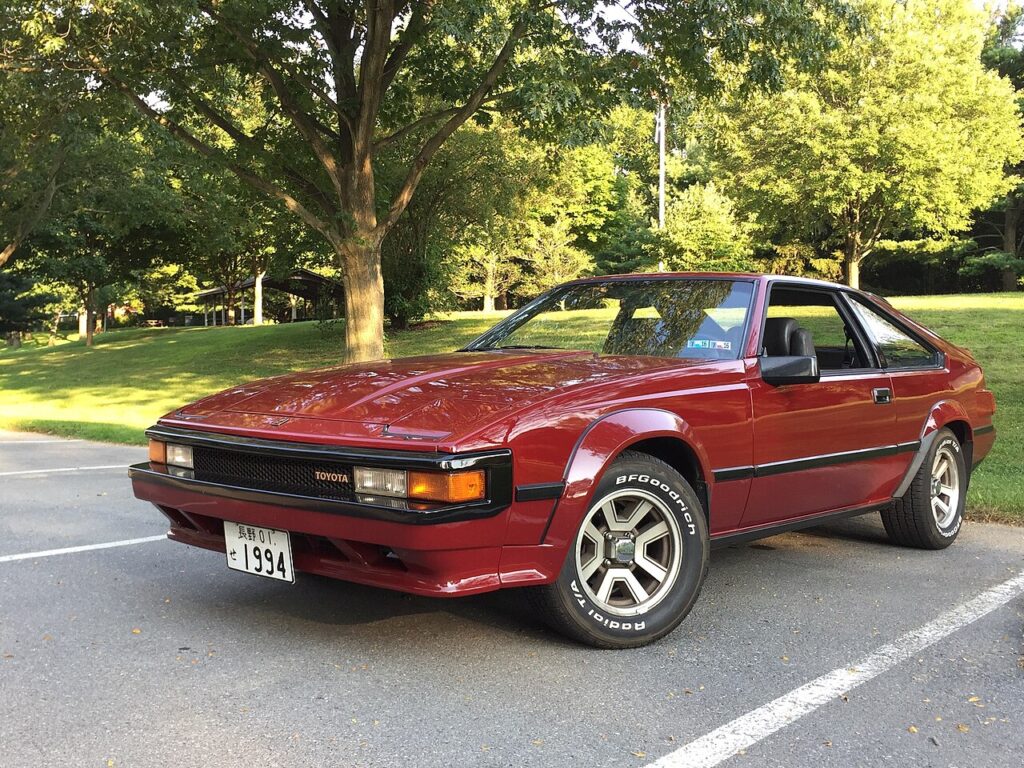
The Toyota Supra MKII, introduced in 1982, was the first true successor to the Celica Supra, boasting improved styling and more power. This generation became popular for its 2.8-litre inline-six engine and sporty handling, particularly with the optional five-speed manual transmission. It’s a great candidate for restoration because it offers a blend of performance and classic 80s styling. Market value for a well-maintained example falls between US $15,000-$30,000 depending on condition and rarity. When restoring, focus on the engine’s cooling system, suspension components, and common rust areas.
Restoring this generation of Supra is a rewarding experience for those who love 80s Toyota design. The MKII is particularly sought after by collectors who admire the performance aspects, including the rear-wheel-drive layout. If you can find an unmodified, original example with the correct badges and trim, it will carry strong value. With attention to the engine, transmission, and proper bodywork, this model has lasting appeal as a classic performance car.
1974-1977 Toyota Celica GT
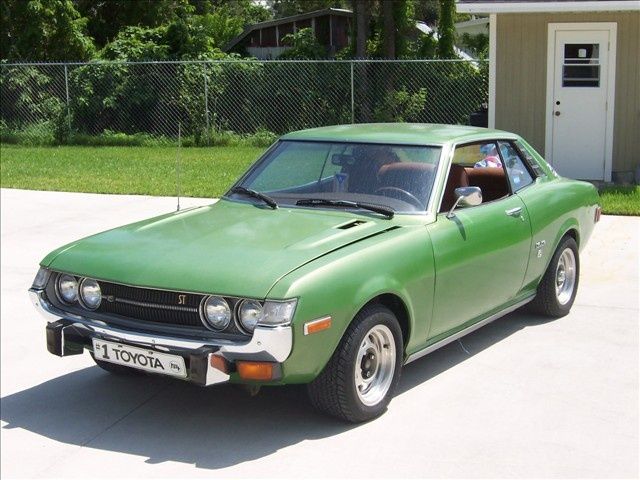
The Toyota Celica GT, produced between 1974 and 1977, was the sporty trim of the first-generation Celica, quickly gaining attention for its sharp styling and performance. It came with a 1.9-litre or 2.0-litre engine, making it one of the most exciting cars of its era. Its best feature is the sleek, coupe design and low weight, making it agile and fun to drive. Market values for a well-preserved GT version typically range between US $15,000-$20,000, depending on mileage and condition. When restoring, focus on rust issues in the body, especially around the rear wheel arches, and ensure the mechanical parts are serviced.
This first-generation Celica offers an affordable entry point for classic Toyota restoration projects. Restoring it with period-correct details, such as the original wheels and interior, will significantly increase its value. The Celica GT’s appeal lies in its mix of vintage charm and reliable performance. Keep the restoration true to its original specifications to ensure the best return on investment. Its straightforward build and solid mechanical foundation make it a great choice for car enthusiasts looking to restore a piece of Toyota history.
1986-1992 Toyota Celica Supra MKIII
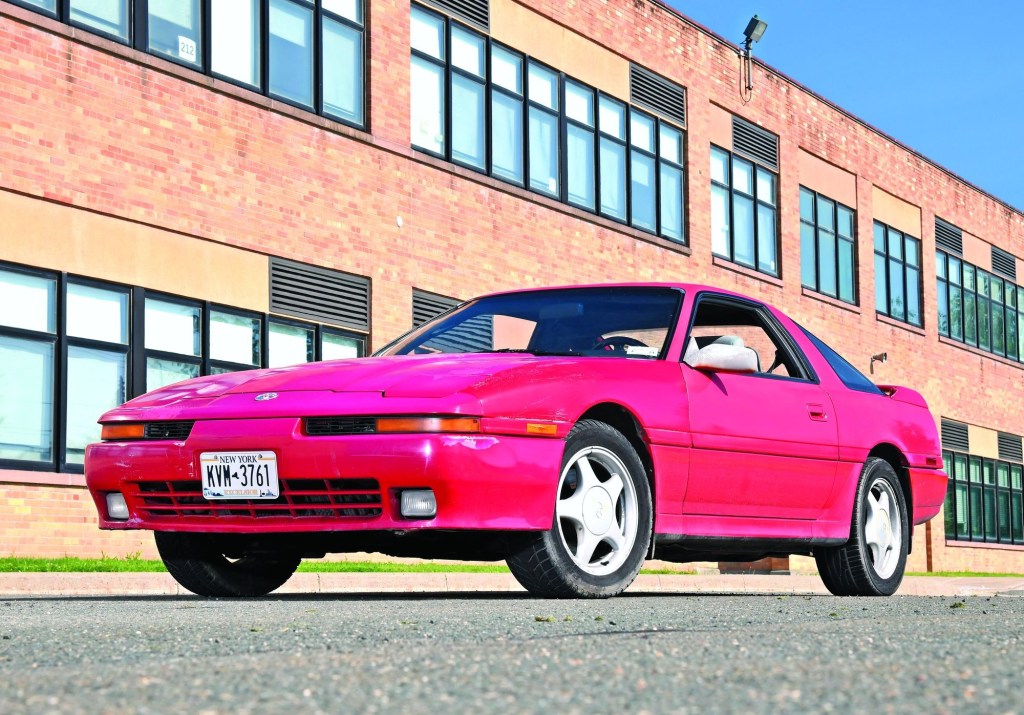
The MKIII Celica Supra, released in 1986, introduced a larger, more refined body design with an emphasis on luxury and performance. It featured a 3.0-litre inline-six engine and was available with a turbocharged option in some markets. Its best feature is the balance between comfort and sports performance, especially with its smooth ride and excellent handling. A good MKIII Supra today can fetch between US $20,000-$35,000, with rare turbo models pushing higher values. Restoration should focus on the suspension and engine, particularly ensuring the turbo system is in good condition.
This generation Supra is valued for its iconic 80s styling, comfortable interior, and reliable performance. It offers collectors a chance to own a car that marked the era of high-performance Japanese cars. Whether you’re restoring a naturally aspirated or turbocharged model, preserving the body and maintaining the performance components is key. With proper care, the MKIII Supra continues to be a standout model among Toyota fans. It’s one of the most accessible Supras for restoration, offering both fun and potential value.
1993-2002 Toyota Supra MKIV (A80)
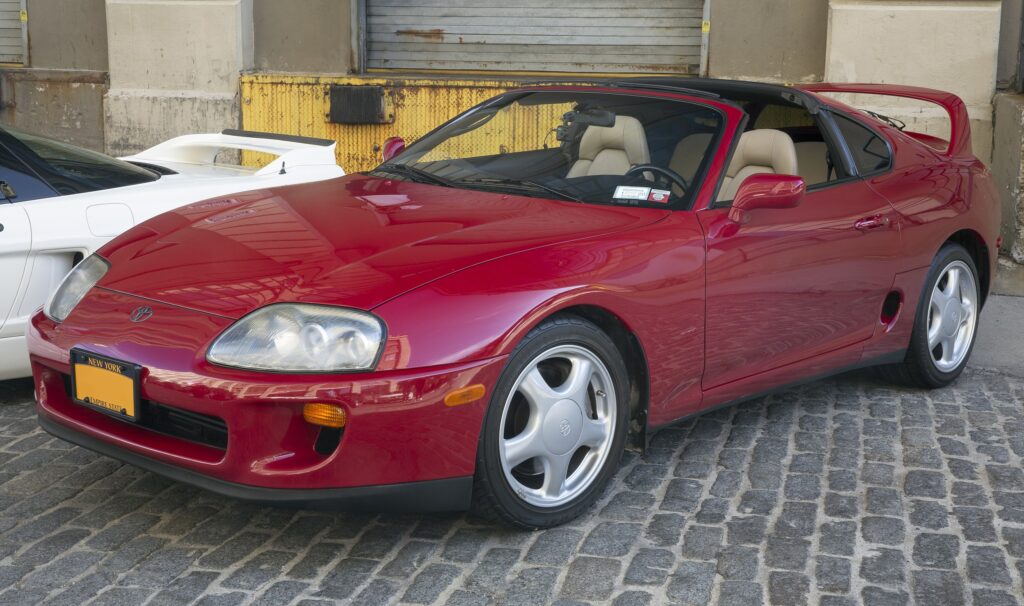
The Toyota Supra MKIV (A80), released in 1993, is one of the most iconic cars in Toyota’s history, especially with its 2JZ-GTE engine. Known for its incredible tuning potential and reliability, the A80 Supra continues to be a top choice for restoration. Its standout feature is the 3.0-litre twin-turbocharged engine, which offers enormous power and is still highly regarded in the tuning community. Market values for an A80 Supra can range from US $30,000-$60,000 for models in good condition, with low-mileage examples reaching even higher. The restoration focus should be on preserving the turbo system, engine components, and interior quality.
The A80 Supra’s fame grew after appearing in the Fast & Furious franchise, which solidified its place in pop culture. Despite being known for its performance, the Supra also offers a refined and comfortable interior. Restoring this model can be a high-reward project, especially if you can find a relatively original example. With the right care, the A80 Supra can become a highly prized collector’s item. This generation remains one of the most sought-after Toyota sports cars, making it a smart restoration investment.
1990-1993 Toyota Celica GT-Four ST185
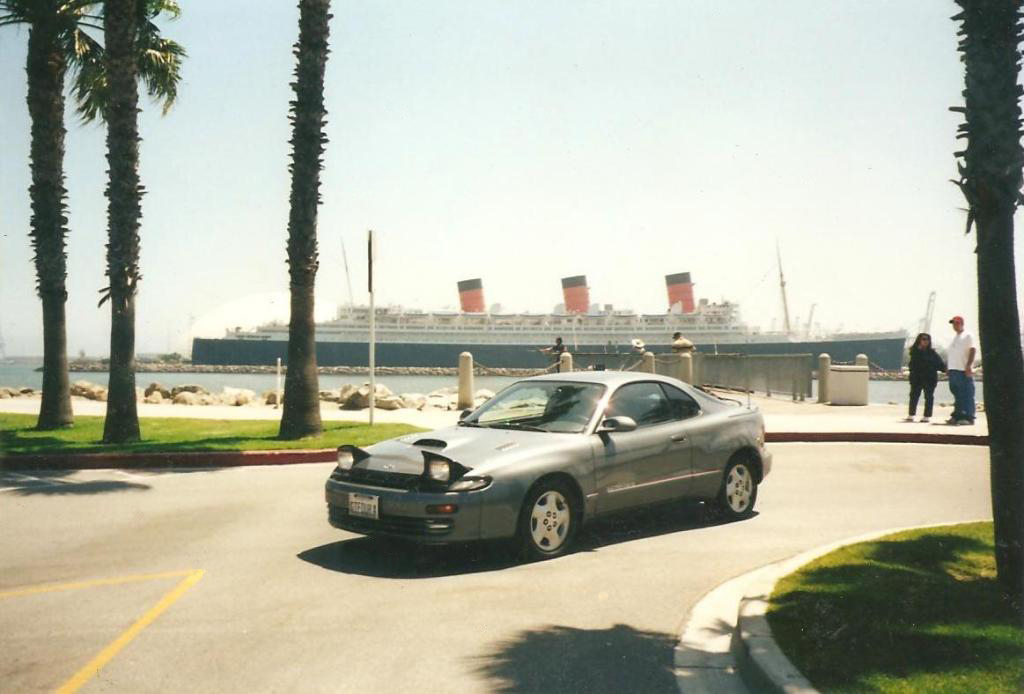
The Celica GT-Four ST185, produced from 1990 to 1993, is one of the most legendary rally cars Toyota has produced. It featured a 2.0-litre turbocharged engine and an all-wheel-drive system, making it a potent contender in the World Rally Championship. The GT-Four’s best feature is its rally heritage, combined with impressive off-road capability and handling. These cars are growing in value, with well-restored examples fetching US $20,000-$40,000 depending on condition. Restoring a GT-Four involves inspecting the turbo system, the drivetrain, and ensuring the all-wheel-drive components are functioning correctly.
This version of the Celica became an instant classic due to its motorsport pedigree and limited availability. The ST185’s turbocharged powertrain, coupled with all-wheel drive, gives it an exhilarating driving experience. Finding an unmodified example is rare, making restoration all the more valuable. For collectors, this model represents a significant piece of Toyota’s motorsport legacy. Restoring the ST185 will bring back a piece of racing history while offering exciting performance on the road.
1971-1973 Toyota Celica ST
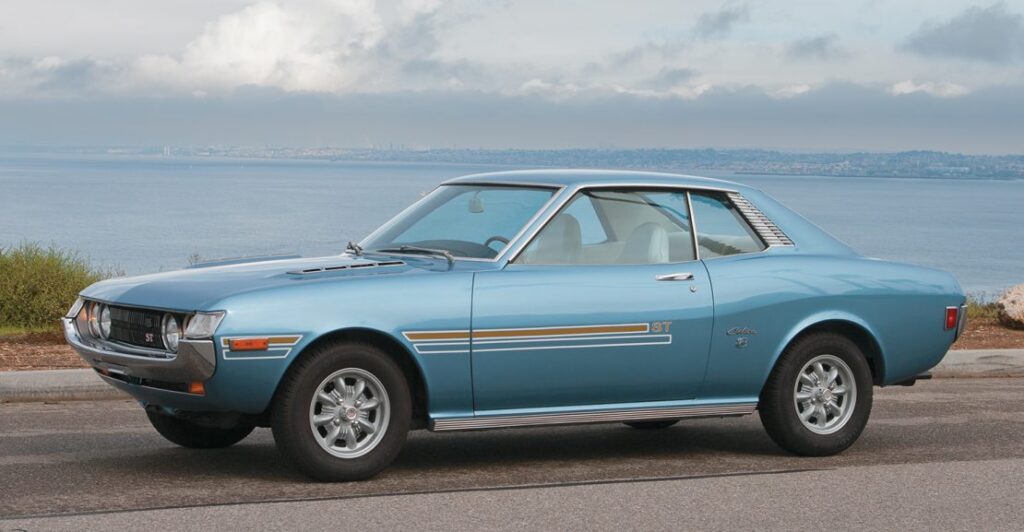
The Toyota Celica ST from the early 1970s is one of the original Japanese sports coupes that paved the way for future generations. With its sleek design and the option of a 1.6-litre or 1.9-litre engine, it offered a perfect balance of performance and affordability. The ST model, being the base trim, offers a more accessible restoration project. Market values for these early models are around US $10,000-$18,000, depending on condition and rarity. When restoring, focus on the engine components, interior details, and rust prevention in the undercarriage.
These early Celicas are becoming increasingly rare, especially those in original condition. Restoring this classic offers the opportunity to bring a piece of Toyota’s early performance history back to life. With its combination of classic 70s styling and reliable engineering, the Celica ST has a timeless appeal for car enthusiasts. Many owners of these cars cherish the straightforward driving experience, and restoring one can bring a rewarding connection to the golden era of Japanese sports cars.
1986-1989 Toyota Celica ST162

The Celica ST162, produced from 1986 to 1989, is a standout from the late 80s, offering a stylish compact design with a 1.6-litre engine. This generation was important because it introduced a more refined version of the Celica, blending sportiness with daily usability. Market values for a well-maintained ST162 typically range between US $8,000-$15,000, depending on condition and originality. Restoring this car involves focusing on maintaining the bodywork, restoring the interior, and ensuring the engine is running smoothly.
While it may not have the performance power of some of its successors, the ST162 remains a favorite among enthusiasts for its reliability and classic 80s aesthetic. The car’s sleek lines, combined with its sporty yet practical design, make it a rewarding restoration project. The ST162 offers an entry point into the world of Toyota classics, with plenty of potential for those willing to put in the effort. Restoring it correctly will keep its original spirit alive while bringing it back to its former glory.
This article originally appeared on Avocadu.
